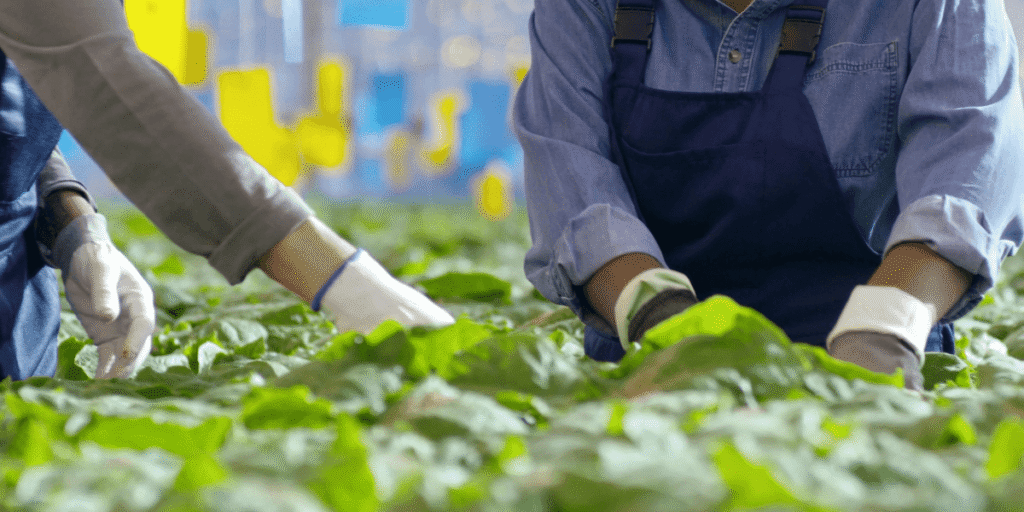Hydroponic for Sustainable Living isn’t just a trend; it’s a smarter, kinder way to grow food that our planet desperately needs. With traditional farming using huge amounts of water, land, and chemicals, it’s clear we need a better way. Imagine growing fresh, nutritious veggies right at home, using far fewer resources and zero soil.
This revolutionary method moves plant growing indoors or into controlled spaces, cutting waste and protecting the environment. Hydroponics isn’t just about farming differently; it’s about building a healthier future for ourselves and the Earth. Let’s explore how this simple change can make a big difference.
Environmental Benefits of Soilless Cultivation
At its core, hydroponics significantly lowers our environmental impact, making it an excellent choice for sustainable living.
Saving Water and Land with Sustainable Gardening
Hydroponics is surprisingly good at saving water. Unlike traditional farming, much of the water in the soil evaporates or drains away. Hydroponic systems recycle water continuously. This allows us to grow the same amount of food using far less water and helps protect our precious freshwater resources.
It’s also amazing how much food you can grow in a small space. With vertical farms, what would normally take hundreds of acres can fit into just one acre. This provides more fresh produce in cities and frees up land for forests, wildlife, or community gardens. It makes much better use of the space we have.
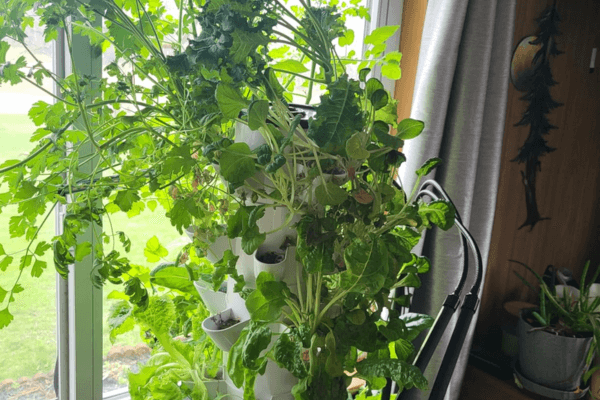
Growing Clean and Nutritious Produce Indoors
Hydroponics makes it easy to grow cleaner, healthier food. In a carefully controlled environment, pests are kept to a minimum, which means we don’t need to rely on chemical pesticides. That not only keeps the produce safer to eat but also helps protect our soil and water from harmful runoff.
Another great benefit is how local it can be. Growing food closer to where we live cuts down on transportation, which means fewer carbon emissions and fresher food on our plates. On top of that, plants get exactly the nutrients they need at the right time, often resulting in tastier, more nutritious fruits and vegetables that are harvested at peak ripeness. It’s a way of growing food that’s better for both people and the planet.
Economic and Community Advantages of Green Farming
Hydroponics offers surprising economic and social benefits. These systems are not affected by seasons, droughts, or extreme weather. They can provide a steady supply of fresh food all year. This boosts food security from dry deserts to busy city centers. The growing hydroponics industry also creates skilled jobs in horticulture, technology, engineering, and logistics. These jobs help drive innovation and sustainable economic growth.
Hydroponics also has a real impact on communities. By bringing fresh, nutritious produce into urban areas, it helps tackle “food deserts” and gives more people access to healthy, affordable food. For those who want to start a small, city-friendly garden, urban hydroponics is a practical way to grow your own produce. It also supports local food systems and promotes equitable access to nutrition.
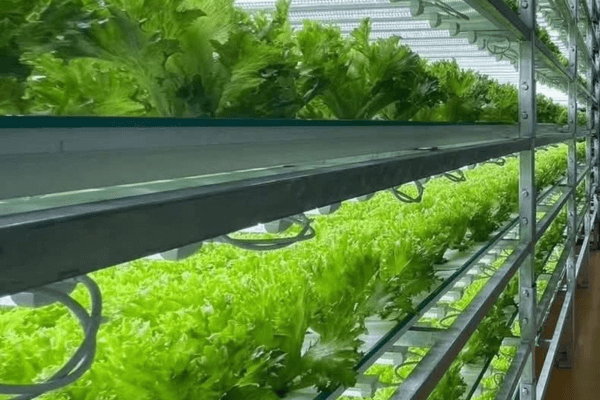
Overcoming Challenges in Controlled Environment Farming
Hydroponics has incredible potential for sustainability, but to fully realize it, we need to recognize and tackle the challenges it brings.
Sustainable Urban Gardening Solutions
Even though hydroponics can be a game-changer for urban farming, it has some challenges. Running artificial lights, pumps, and climate control systems like heating or cooling uses a lot of energy. This can be a problem if the electricity isn’t from sustainable sources. Setting up a commercial-scale hydroponic farm also requires a significant upfront investment in infrastructure, specialized equipment, and advanced controls. This can make it hard for newcomers to get started.
There are also environmental considerations. Many hydroponic systems use plastic for pipes, reservoirs, and growing media. It’s important to manage these materials carefully to avoid new environmental problems. Nutrient solutions and inert growing media also need to be replaced or recycled over time. Proper waste management is key to making the system truly sustainable.
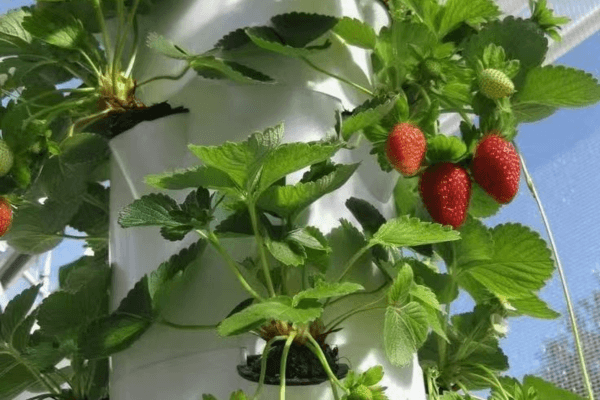
Innovations Shaping Eco-Friendly Farming Systems
Hydroponics is moving fast toward a more sustainable future. Farms are starting to rely on renewable energy like solar and wind, and smarter LED lights, efficient pumps, and climate control systems are helping use less power. On top of that, sensors and AI are making it possible to give plants exactly what they need when they need it, which means healthier growth, less waste, and better yields.
Sustainability also comes from thinking in circles. Plant waste can become compost or bioenergy, nutrient solutions can be recycled, and some farms even combine fish and plants in one system so they help each other grow. Researchers are working on biodegradable materials and ways to reuse equipment, and more crops beyond leafy greens are becoming possible to grow this way. All these innovations are helping hydroponics grow in a way that is better for people and the planet.
Practical Solutions for Indoor Growing Challenges
Although hydroponics brings many advantages, it also comes with a few challenges that growers need to consider. Energy consumption is one of the biggest concerns, since artificial lighting, pumps, and climate control can use significant electricity. This can be managed by choosing high-efficiency LED lights, energy-saving pumps, and optimizing the system size to match your space and needs. Initial setup costs can also be intimidating, especially for commercial-scale operations, but careful planning and phased expansion can make it more manageable.
In addition, many hydroponic systems rely on plastic components, which raises questions about sustainability. Using durable, long-lasting materials, selecting systems with recyclable or eco-friendly parts, and properly maintaining equipment can greatly reduce environmental impact. Our hydroponic towers and smart control systems are designed to address these issues, allowing precise nutrient and water management, reducing waste, and minimizing maintenance, so even first-time users can run an efficient and eco-friendly system.
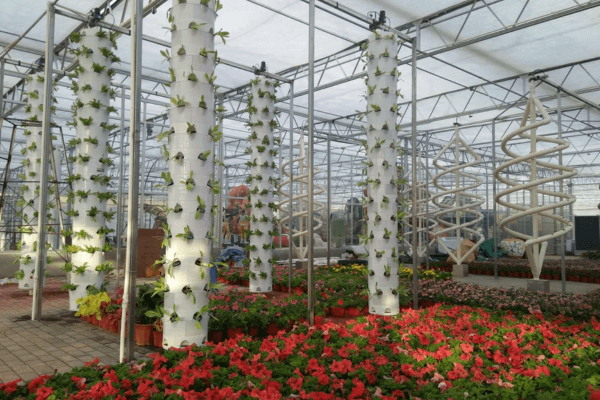
Future Trends in Sustainable Food Production
Hydroponics is increasingly shaping the future of urban agriculture, community farms, and educational projects. Smart automation, IoT sensors, and AI-driven monitoring make it possible to fine-tune light, nutrients, temperature, and humidity for optimal plant growth, which increases yields and reduces waste. Circular economy practices, such as converting plant waste into compost or bioenergy and recycling nutrient solutions, are becoming standard, further improving sustainability.
As research continues, more crop varieties including fruits, root vegetables, and specialty herbs are becoming viable for hydroponic production. This not only expands food options for local communities but also creates jobs in horticulture, technology, and logistics, fostering green economic growth. By integrating hydroponics into urban spaces, schools, and local markets, we can improve access to fresh, nutritious food, reduce the environmental footprint of agriculture, and support resilient, sustainable communities.
FAQs on Indoor and Urban Gardening Techniques
Q1: Does hydroponics really save water?
A: Absolutely! Hydroponic systems recycle water directly to the roots, so there’s almost no waste from runoff or evaporation. In fact, they can use up to 90% less water than traditional soil farming.
Q2: Won’t grow lights drive up my electricity bill?
A: Not necessarily. Modern LED grow lights are super energy-efficient. Many growers also pair them with solar panels or other renewable energy, so it’s possible to keep your electricity use low and eco-friendly.
Q3: Are hydroponic vegetables safe to eat?
A: Yes. While they still need nutrients to grow, most hydroponic systems don’t use chemical pesticides. Many growers use food-safe or natural nutrients, so the produce is clean, fresh, and safe even if it’s not technically “organic.”
Q4: Can I really grow anything in a small apartment?
A: Definitely! Even a compact countertop system can grow herbs, lettuce, or small fruits like strawberries. It’s a convenient way to have fresh greens year-round, right at home.
Q5: Isn’t all that plastic wasteful?
A: Most hydroponic setups use durable plastics that last for years. Some brands use recycled or eco-friendly materials, and many components can be reused or recycled at the end of their life.
Building a Greener Future with Smart Farming
Hydroponic gardening is more than just a clever way to grow plants without soil. It’s a practical step toward a greener future, helping us use far less water, save land, reduce pesticides, and grow fresh food locally all year round. By making these changes, hydroponics offers real solutions to some of the biggest challenges our planet faces today.
Of course, no system is perfect, but innovations in energy efficiency, smart technology, and circular practices are constantly making hydroponics more eco-friendly. Whether you’re tending a small balcony setup or managing a large urban farm, embracing hydroponics means choosing a smarter, more sustainable way to grow cultivating not just plants, but a healthier, more resilient future for everyone.
Getting Started with Home-Based Eco Gardens
Whether you’re starting with a small indoor setup or planning a full-scale hydroponic garden, growing leafy greens in hydroponics is easier and more rewarding than ever. This soilless method uses less water, saves space, and allows you to harvest fresh, nutrient-packed greens throughout the year right from your own home.
The journey to sustainable living starts with action. Whether you’re a seasoned gardener looking for a new challenge or a complete beginner eager to make a difference, hydroponic gardening offers an accessible and rewarding path. From practical tips to easy-to-follow guides, we’re here to help you grow smarter and greener every step of the way.
Ready to take your first step? Visit greenfuturehydro.com to learn how hydroponic gardening supports sustainable living. Or explore our full range of energy-efficient hydroponic systems and cutting-edge grow lights at greenfuturelight.com and start growing fresher food for a healthier planet today.
Already growing hydroponically? We’d love to see your setup! Tag @Greenfuturehydro on Instagram or share your story with us. Whether you have questions about systems, nutrients, or lighting, our expert team is always here to support your journey.
